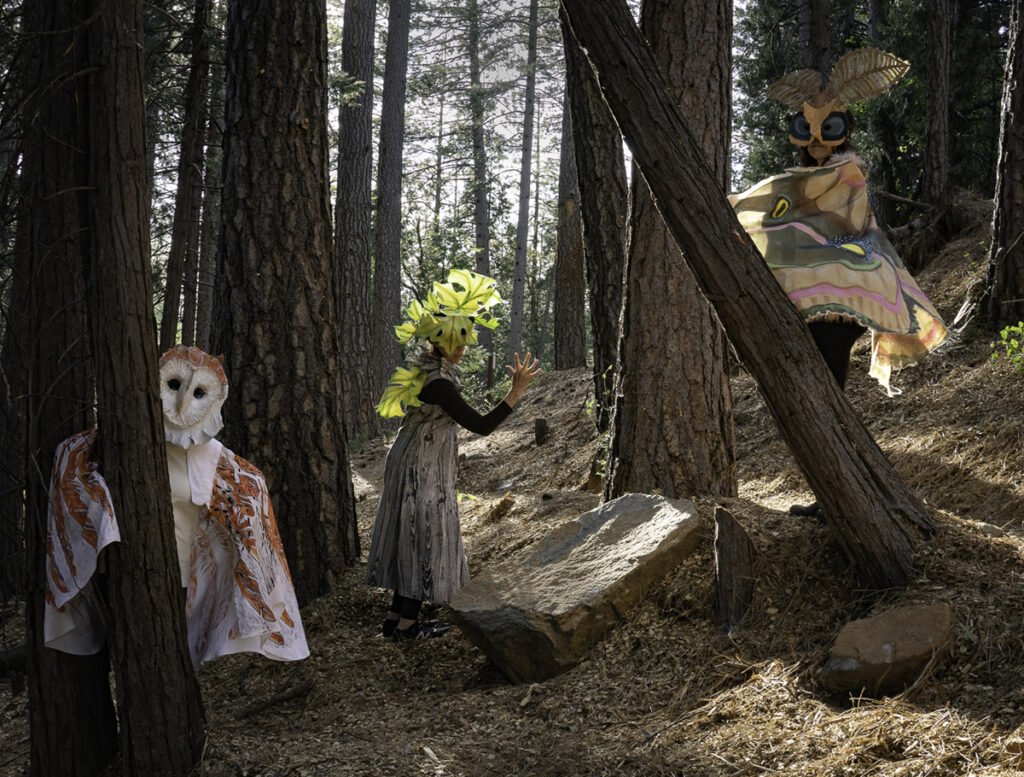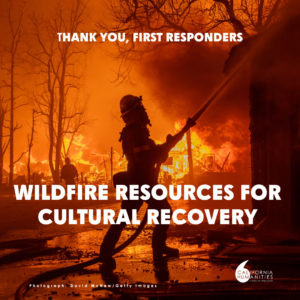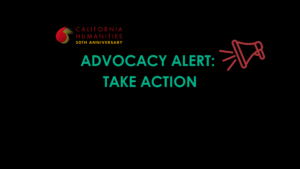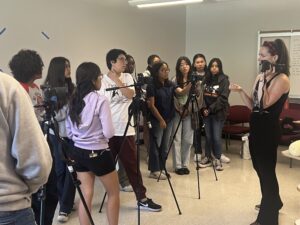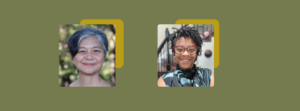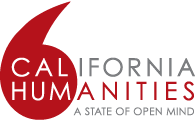Above: Cast members of Project Wild Edges in Grass Valley, California. Photographer: Dee Anne Dinelli
In recognition of Earth Month, we interviewed Jenny Hale and Lisa Barker, directors of the Humanities for All Project (HFAP)-supported Project Wild Edges. Employing a 35-member cast and crew over the course of 19 events in the spring of 2022, Hale and Barker helped bring site-specific interactive, multimedia theater and outreach events to over 1,200 people in California’s Sierra region to explore the intersection of nature and culture.
We congratulate Hale and Barker for closing out a successful year as first-time HFAP grantees, and invite you to view their 2022 project documentary to learn more.
Please tell us what inspired you to do Project Wild Edges (PWE) and what you hoped to accomplish through it.
The inspiration for Project Wild Edges was the Wolf Creek Trail, an edge between civilization and the wild, shopping centers and open space, park settings and free running creeks, visited by people and wildlife alike. Project Wild Edges was an innovative presentation set outdoors using the creativity of theater to highlight the challenging environmental conditions our community faces in California’s Sierra Foothills. The project’s purpose was to provide a platform to share the voices and perspectives of historians, First Peoples, ecologists, and current land managers: all who have had a presence and impact on this site. Each performance included time for a public Q&A related to the concepts explored in the performance on the trail. Through this creative endeavor we hoped to create an opportunity for the audience to evaluate our land management practices, to reflect on their relationship to nature, and to consider how their daily habits impact the natural world.
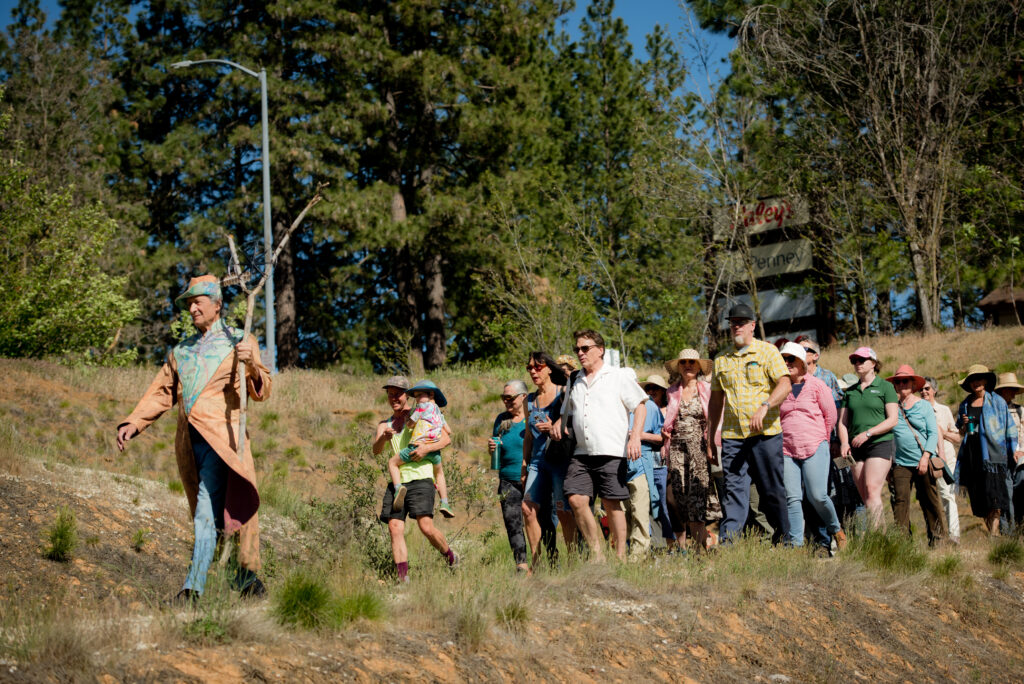
Your project employed storytelling as a way to explore complex issues related to environmental and social history. Why did you choose this approach?
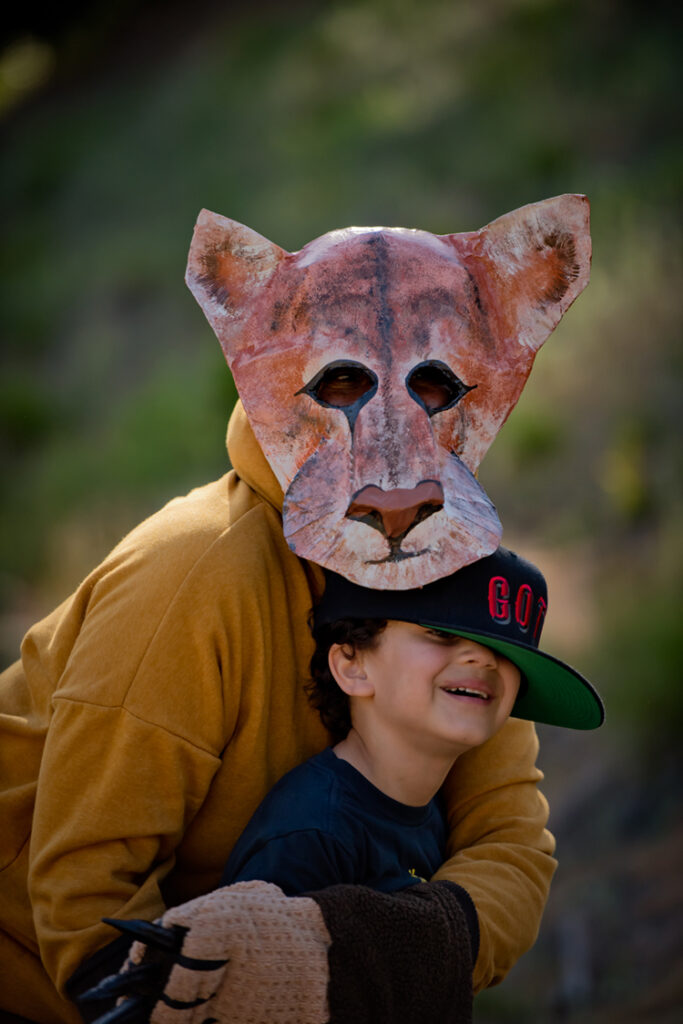
Storytelling is a great way to connect with audiences on an emotional level. So many people told us that the presentation was “so touching,” and many said they were moved to tears. We were very careful to keep the play politically neutral, though we were dealing with very charged issues about how to manage natural resources in times of extreme climate. Our community is dealing with uncertainty about fire, smoke, and power loss, and a story in the forest allowed them to connect with that free-floating anxiety. It is through stories that we experience information through all our five senses, thus having a greater impact on how we learn. In our project we made a grand effort to have different points of view presented so that an audience member could identify themselves in some role and then take on the story as if it were their own. Stories are archetypical metaphors that can bring awareness into our relationships, our subconscious, and our shared humanity.
PWE involved collaborations with many individuals and organizations in the community. Who did you partner with and what were some of the most important relationships you were able to cultivate?
We partnered with the Miners Foundry Cultural Center in Nevada City, who acted as our fiscal sponsor. We developed relationships with so many wonderful individuals, organizations, and businesses, that it is hard to single out the most important ones. These partnerships enriched the project on a myriad of levels. Our humanities advisors, discussion leaders, and content consultants, enriched the script with their knowledge and perspectives. We solicited local businesses for cash and matching donations and learned so much about the people who serve this community. Skilled volunteers helped us sew exquisite costumes, create websites, and learn accounting programs. The most important relationships were with the many individuals who held up their hands and shared their energy and enthusiasm.
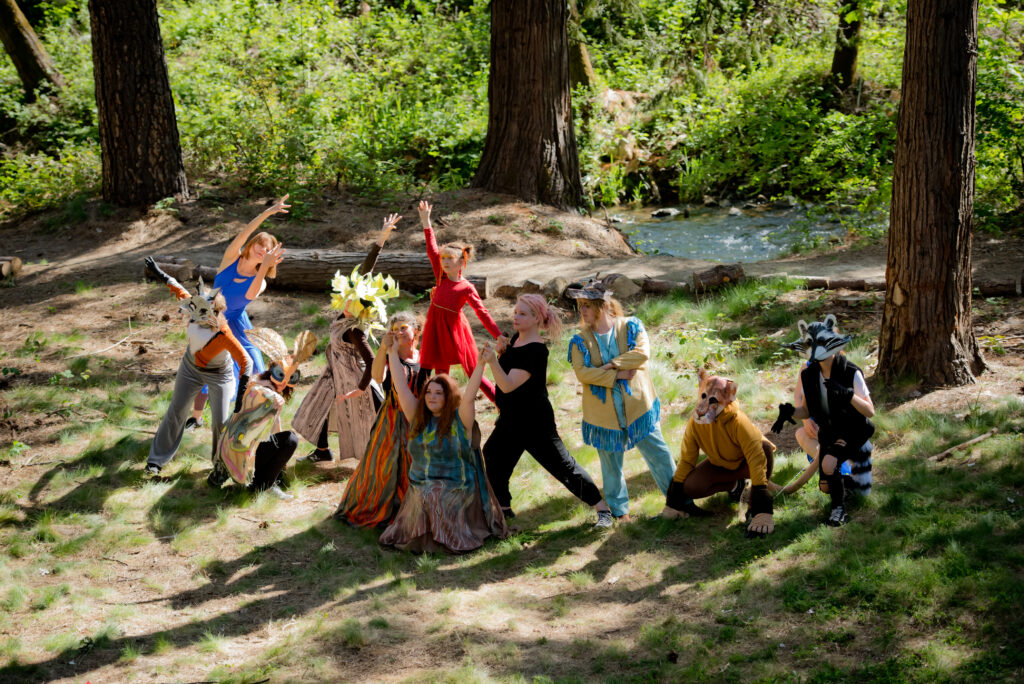
Who came to your programs and what, generally, has been the response from the public?
Performances were attended by our local media, sponsoring businesses, local government representatives, and friends and families of our team of volunteers. Our audience included a wide span of ages and political views. Nevada County is not very racially diverse, but because our cast and crew included Asian, Latinx, African American and transgendered people, our audience included their friends and family.
How has doing this project changed the way and other core team members think about your work?
One of our core team members who helped to inform the science behind our project, also played the role of Polyphemus Moth in our performances. She was so impressed with the use of theater arts to catalyze community education, conversation, and activism that she began to utilize this model in teaching her community college science classes. She now creates assignments and curriculum that blend humanities perspectives and art processes with the scientific concepts of climate change to great success.
Theatre is a multi-media team sport and presenting a play over a quarter mile section of trail was challenging. Project Wild Edges was an invitation to the community to push their own boundaries. Participants developed confidence in their own artistic aspirations and abilities.
Do you have any plans to continue or extend this project?
Currently, we are planning an art show in the lobby of the Nevada County government center, featuring oil paintings, costumes, and large-scale photographs from the project, as well as screening our new project documentary. We will be using PWE as an educational model and offering community workshops exploring ecological issues through creativity including team development of visual art installations and performances.
What advice do you have for humanities programmers who are looking to inspire connections with and promote the preservation of the natural world?
We felt it was exciting to do a program about our relationship to nature while being out in nature! However, performing outside meant that we were collaborating with nature and people; weather and the changing landscape. What a challenge! All of these factors affect our “set.” For example, we spent many weeks working out a moving tableau only to discover that a large number of trees had either fallen down or were cut down, making sight lines completely different. Then there is the actual performance event where people and animals passing by can have unpredictable impacts. For creative minds working to direct a live outdoor theater event on a public trail, this can either be frightening or thrilling: your choice.
About the authors:
Jenny Hale has engaged the community in public discourse and creative expression throughout her 35-year career in a variety of mediums, including public access television programming, community based permanent public sculpture, art installations, and performance art. Lisa Barker has a Master’s Degree from UCLA’s World Arts & Cultures/Dance program and is a Registered Somatic Dance Educator with over 20 years of experience in dance and theater.
